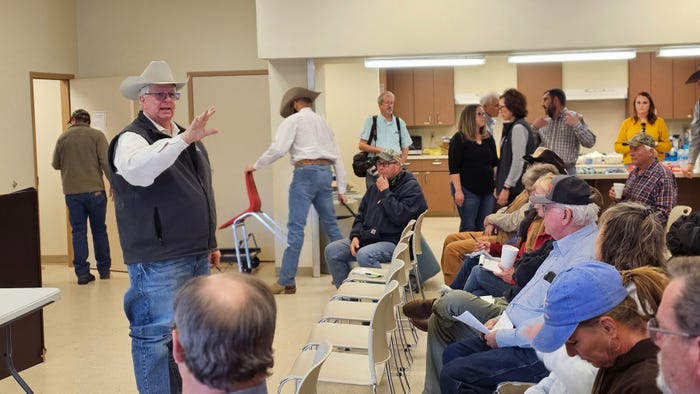
Private citizens, in addition to USDA programs, other federal agencies, and commodity organizations, continue to aid people who lost livestock, infrastructure, and homes to the historic late-February wildfires that swept across the Texas Panhandle.
“Ranchers still need fencing supplies,” says Hemphill County Agricultural Extension Agent Andy Holloway, Canadian.
Fence posts, wire, and other materials are needed to repair, but mostly replace, thousands of miles of fencing.
“What we’ve gotten so far is not close to being enough to replace what we lost,” he says. “Ranchers desperately need these supplies.”
A livestock supply point, set up to collect feed and other needed supplies after the fires, was closed May 31.
“Hay yards in Hemphill County remain open. We can still take hay and have five hay yards in the county. Ranchers come and get hay as they need it, but we try to direct as many semi-loads of hay as we can straight to ranchers. We had hundreds of loads delivered to ranches the first 60 days after the fires. We are not asking for hay now, but we are not turning down hay if folks have extra.”
The fencing supply yard also remains open.
Financial donations
Holloway says financial donations are greatly appreciated. “If folks can donate financially or bring a load of wire or tee posts, we need those badly. We just received a donation for fencing supplies from a foundation in Utah.
"People from all across the nation have been generous. It is amazing how responsive people have been.”
He says private donations have ranged from one little girl who donated $10 because she “wanted to help the ranchers,” to a check for $100,000. “Sellers have made homes available to folks who lost their homes.
“We are grateful for giving hearts,” Holloway says. “Continue to pray for us. That means a lot.”
Assistance options
Assistance programs remain available.
DeDe Jones, Texas A&M AgriLife Extension economist, says more ranchers than she has ever seen before are taking advantage of USDA programs such as the Livestock Indemnity program.
“More are taking advantage of Livestock Indemnity and other programs than they did after the 2017 fires,” she says. “I've talked to local FSA directors who say they have been bombarded with requests and a lot of forms have been submitted.”
She says the Livestock Indemnity Program and several others reimburse ranchers for up to 75% of the market value of their cattle at the going rate. “Most ranchers who lost cattle are doing that.”
Options like the NRCS EQIP program and a few others cost share fence replacement or rebuilding, as well as, aid to replace or repair windmills and watering systems. “But all the programs together will not cover anywhere near what ranchers need to get back to where they were before the fires,” Jones says.
She adds that programs such as Livestock Indemnity were not available when she started with Extension 20 years ago. “These programs are huge. We’ve seen big improvements in the overall USDA programs in that they now offer some relief for livestock producers.”
Jones says most producers affected by the fires likely will stay in and try to recover.
For some, the task is gargantuan. “We had huge fires back in 2017, burning about 500,000 acres, mostly in the Northern Panhandle; this time it was in the Eastern Panhandle. Hemphill is one of the few counties that got hit both times. Two devastating fires in seven years are hard to recover from. But I think most have a pretty good attitude and will come back.
“But I have talked to some older ranchers who said they are not sure if they want to do it again. It takes several years to recover from this. They had just recovered from the last fire, and they're 70 or 80 years old and say they're about done. So it depends on the person.”
About the Author(s)
You May Also Like




.jpg?width=700&auto=webp&quality=80&disable=upscale)


